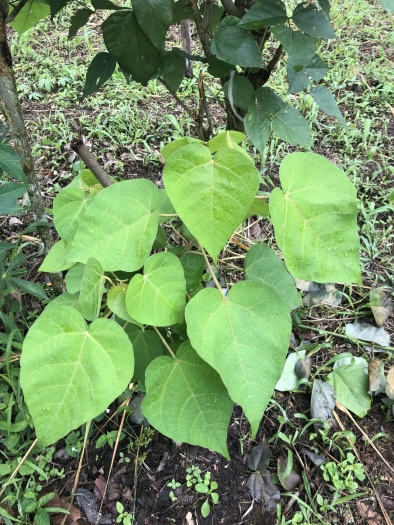Sangre De Grado
(Croton lechleri)
Sangre De Grado (Croton lechleri)
/
/

© Skjold Søndergaard
CC BY 4.0
Image By:
© Skjold Søndergaard
Recorded By:
Copyright:
CC BY 4.0
Copyright Notice:
Photo by: © Skjold Søndergaard | License Type: CC BY 4.0 | License URL: http://creativecommons.org/licenses/by/4.0/ | Uploader: skjoldalsted | Publisher: iNaturalist |






Estimated Native Range
Summary
Croton lechleri, commonly known as Sangre de Grado or Dragon’s Blood, is a medium-sized deciduous tree native to tropical rainforests in the Amazon basin, extending to areas of Ecuador, Peru, and Colombia. It thrives in the understory of the forest and along riverbanks, where the environment is humid and the soil is consistently moist and rich in organic material. The tree can grow up to 66 feet (20 meters) tall, with a straight trunk and a branching canopy. It is well-known for its distinctive red latex, which is traditionally harvested for medicinal uses.
Sangre de Grado is valued for its therapeutic red latex, which is used as a liquid bandage and for treating gastrointestinal disorders. The latex is rich in compounds like taspine and proanthocyanidins, which have been shown to possess antimicrobial and antiviral properties. In cultivation, it is primarily grown for its medicinal benefits, but it also serves as an ornamental tree due to its attractive foliage and form. It requires a tropical or subtropical climate with high humidity, regular rainfall, and protection from strong winds. The tree prefers partial shade to full sun exposure and thrives in well-drained, fertile soils. While not commonly grown in urban settings, it may be used in botanical gardens or as part of ethnobotanical collections. Care should be taken when handling the latex, as it can cause skin irritation in some individuals.CC BY-SA 4.0
Sangre de Grado is valued for its therapeutic red latex, which is used as a liquid bandage and for treating gastrointestinal disorders. The latex is rich in compounds like taspine and proanthocyanidins, which have been shown to possess antimicrobial and antiviral properties. In cultivation, it is primarily grown for its medicinal benefits, but it also serves as an ornamental tree due to its attractive foliage and form. It requires a tropical or subtropical climate with high humidity, regular rainfall, and protection from strong winds. The tree prefers partial shade to full sun exposure and thrives in well-drained, fertile soils. While not commonly grown in urban settings, it may be used in botanical gardens or as part of ethnobotanical collections. Care should be taken when handling the latex, as it can cause skin irritation in some individuals.CC BY-SA 4.0
Plant Description
- Plant Type: Shrub, Tree
- Height: 20-90 feet
- Width: 10-15 feet
- Growth Rate: Moderate
- Flower Color: Green, Red
- Flowering Season: Spring, Summer, Fall
- Leaf Retention: Evergreen
Growth Requirements
- Sun: Full Sun
- Water: Medium
- Drainage: Medium, Fast
Common Uses
Bee Garden, Erosion Control
Natural Habitat
Native to tropical rainforests in the Amazon basin, thriving in the understory and along riverbanks
Other Names
Common Names: Sangre de Drago, Dragon’s-Blood Croton, Dragon’s Blood Tree
Scientific Names: , Croton lechleri, Croton draco var. cordatus, Oxydectes lechleri,
GBIF Accepted Name: